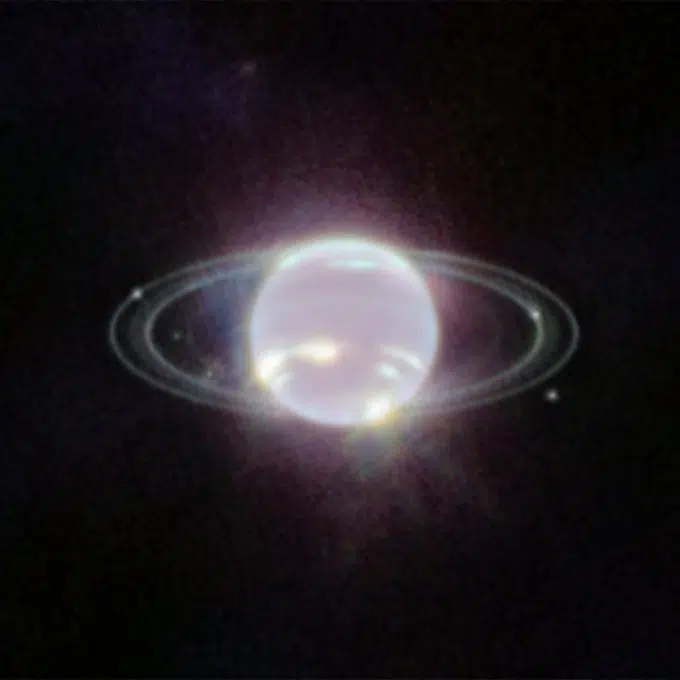
The first image of Neptune from NASA’s James Webb Space Telescope (JWST) offers the finest look at this ice giant’s rings in more than three decades, as well as its fainter dust bands.
Astronomers last obtained such a high-quality picture of the planet that is the furthest from the sun in 1989, when NASA‘s Voyager 2 became the first and only spacecraft to pass by the ice giant for a brief period of time.
According to Mark McCaughrean, a senior advisor for research and exploration at the European Space Agency, Webb’s groundbreaking infrared imaging capabilities have now given us a fresh look into Neptune’s atmosphere.
McCaughrean, who has spent more than twenty years on the Webb project, says the telescope “takes all that glare and background away” so that “we can start to tease out the atmospheric composition” of the planet.
Due to the presence of methane in its atmosphere, Neptune appears to be a deep blue color in earlier Hubble Space Telescope photographs. However, the planet appears greyish- white and has ice clouds as recorded by Webb’s primary imager, NIRCam.
According to NASA, the image reveals an “intriguing brightness” at the summit of Neptune. Astronomers have not yet obtained a decent look at the planet’s north pole due to its tilt away from Earth and the fact that it takes 164 years to round the Sun.
Seven of Neptune’s 14 Known Moons Also Discovered by Webb
Seven of Neptune’s fourteen known moons were also discovered by Webb. When viewed in a zoomed-out picture, Triton, Neptune’s unusually enormous moon encircled by Webb’s renowned diffraction spikes, looks to be a very brilliant, spiky star.
As they scour the cosmos for new planets like our own, astronomers have discovered that ice giant planets such as Neptune and Uranus are the most prevalent in the Milky Way.
McCaughrean said, “By being able to look at these ones in great detail, we can key into our observations of other ice giants.”
As the most potent space telescope ever created, Webb has been in operation since July and has already released an abundance of unheard-of data. The goal is that it will usher in a new era of discovery. In the upcoming year, studies based on Webb’s views of Neptune and Triton are anticipated.
McCaughrean added, “The kind of astronomy we’re seeing now was unimaginable five years ago. Of course, we knew that it would do this, [and] we built it to do this…it is exactly the machine we designed. But to suddenly start seeing things in these longer wavelengths, which were impossible before [is] just absolutely remarkable.”
Webb is designed to investigate longer wavelength infrared radiation, as opposed to Hubble, which primarily studies visible light. This enables it to collect light from the beginning of the universe that was dilated during the course of the universe’s expansion over the previous 13.8 billion years.
See all the latest news from Greece and the world at Greekreporter.com. Contact our newsroom to report an update or send your story, photos and videos. Follow GR on Google News and subscribe here to our daily email!



